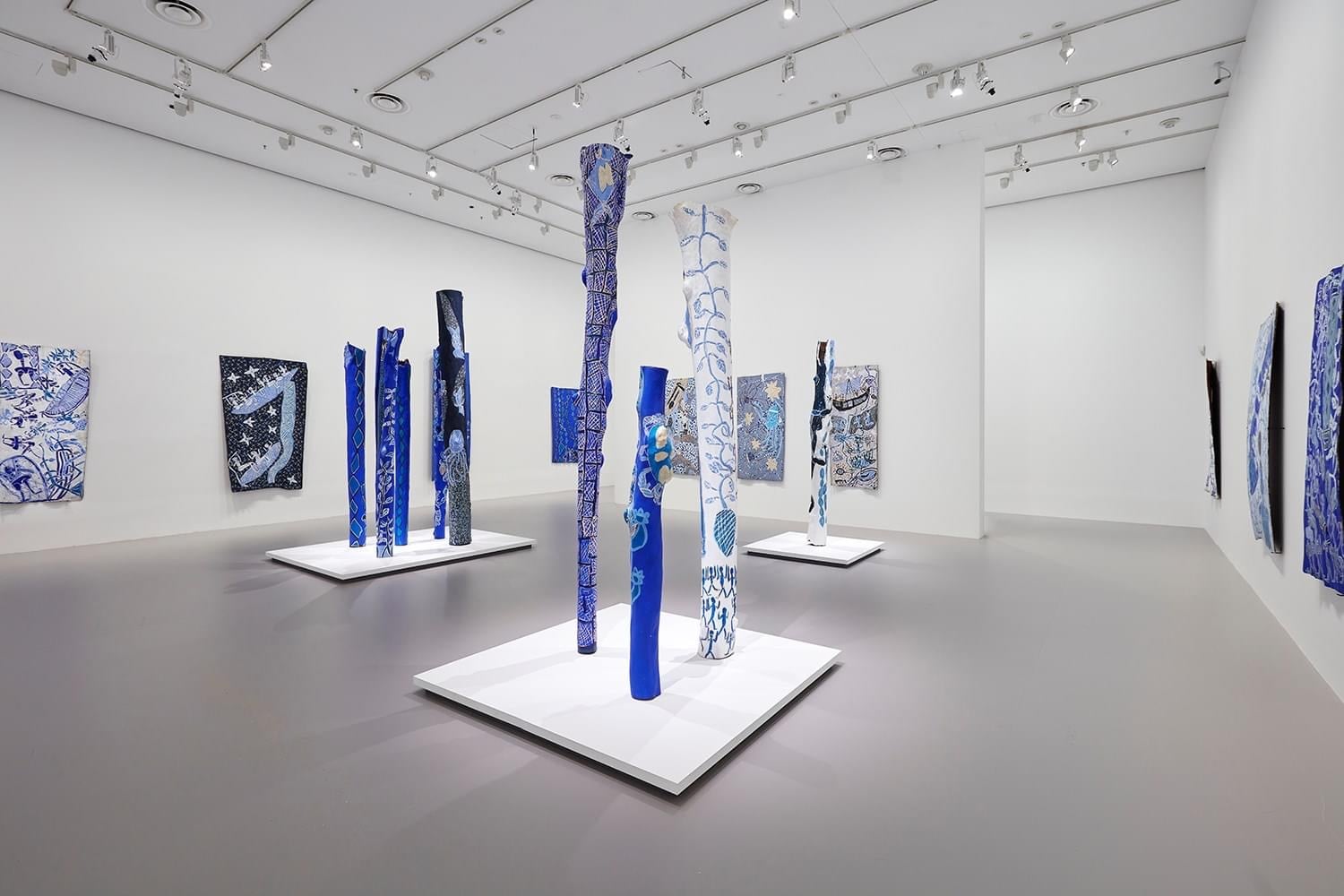
Image: Installation view of Dhambit Mununggurr’s installation Can we all have a happy life 2019–20 on display in NGV Triennial 2020 from 19 December 2020 – 18 April 2021 at NGV International, Melbourne © Dhambit Munuŋgurr, courtesy Salon Indigenous Art Projects, Darwin. Photo by Sean Fennessy.
The NGV Triennial brings contemporary art, design and architecture into dialogue, offering a visually arresting and thought-provoking view of the world at this time. Featuring major new commissions and recent works that span geography, perspective and genre, the exhibition celebrates the work of some of the world’s most accomplished artists and designers, while also giving voice to emerging practitioners.
Crossing cultures, disciplines and traditional divides, the NGV Triennial seeks to question the status quo of the art and design world through the generation of collaborative projects with positive impacts and long-term legacies. A range of new commissions and initiatives demonstrate that we can use the creative process to create outcomes that are intellectually, socially and aesthetically compelling.
As creative disciplines become increasingly porous and interconnected, new systems, materials and technologies are rapidly changing the ways in which artists and designers can imagine and speculate on the future. Through a series of compelling presentations globally significant practitioners working at the nexus of art, design, science and technology, the NGV Triennial offers an inspirational platform to experience and consider how digital and emerging technologies are transforming the landscape of cultural production and industry. These projects reveal a new cultural paradigm where traditional silos have dissolved into an ever changing and accelerating landscape of creative practice.
Unique across the world, the NGV Triennial presents globally significant projects which demonstrate the extraordinary intersection between contemporary art, design and architecture. The adoption of this model rapidly established the NGV Triennial, occurring every three years, as an important contributor to international discourse and collaboration while reinforcing a connection between Melbourne and the broader global community.
Including Indigenous artists Tony Albert, Megan Cope, Steven Rhall, Hannah Brontë, Vicki West, Glenda Nicholls and Dhambit Munuŋgurr.
SOURCE: National Gallery of Victoria.